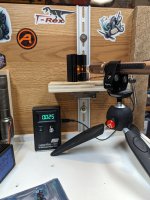- Joined
- Jul 10, 2015
- Messages
- 13,039
- Points
- 113
Here's a little something.
If you can amass a group of buyers you can have your own made and sell a bunch to pay for your project, become the middle men and maybe even profit, but I would wait until the process is refined enough to produce 50mw modules without stability issues, because right now everyone is buying 5mw pointers with stability issues for 130.00 each.
 crystro.supplier.ecer.com
crystro.supplier.ecer.com
If you can amass a group of buyers you can have your own made and sell a bunch to pay for your project, become the middle men and maybe even profit, but I would wait until the process is refined enough to produce 50mw modules without stability issues, because right now everyone is buying 5mw pointers with stability issues for 130.00 each.
Magneto Optical Crystals - TGG Magneto Optical Crystals from China Factory
Be a quality Magneto Optical Crystals supplier from China, we provide quality Magneto Optical Crystals for you
Last edited:







